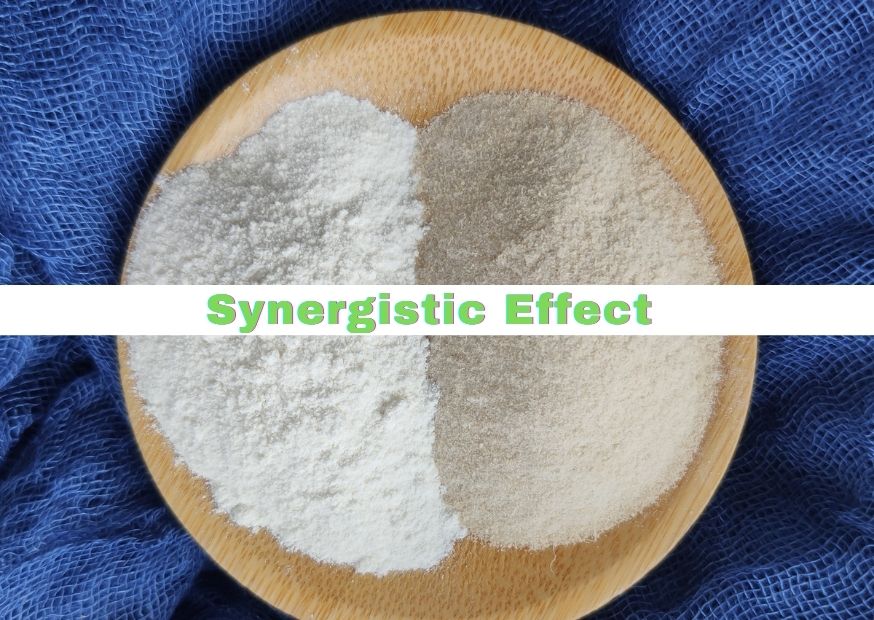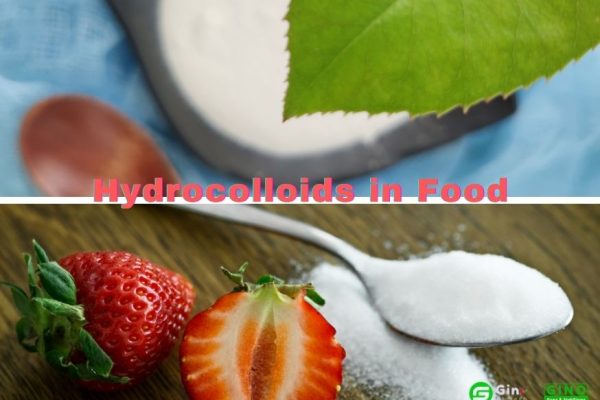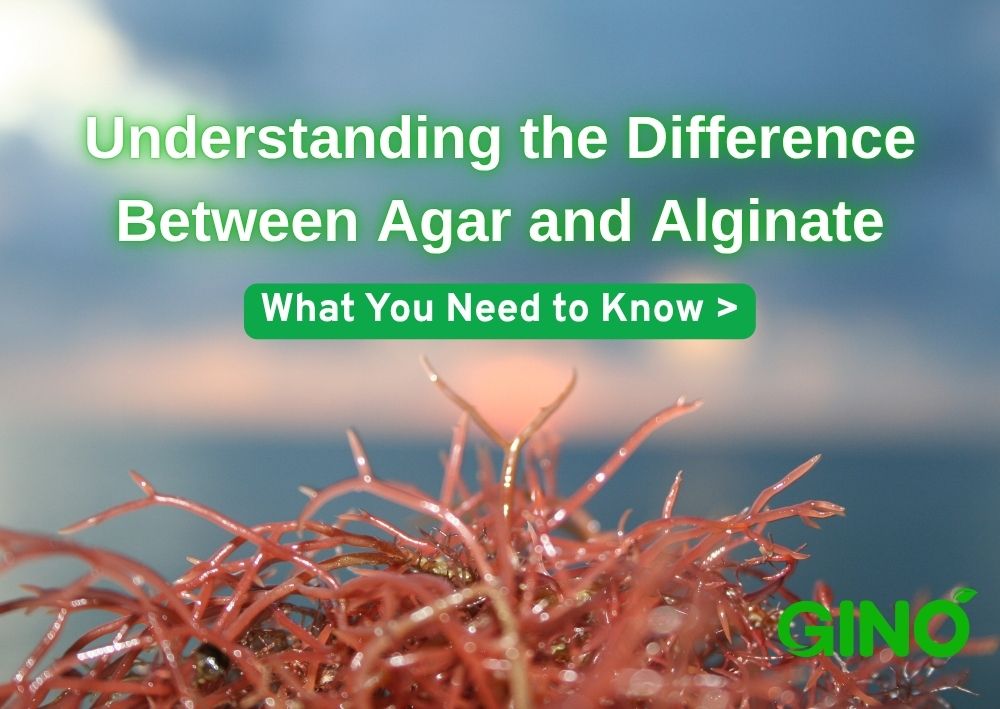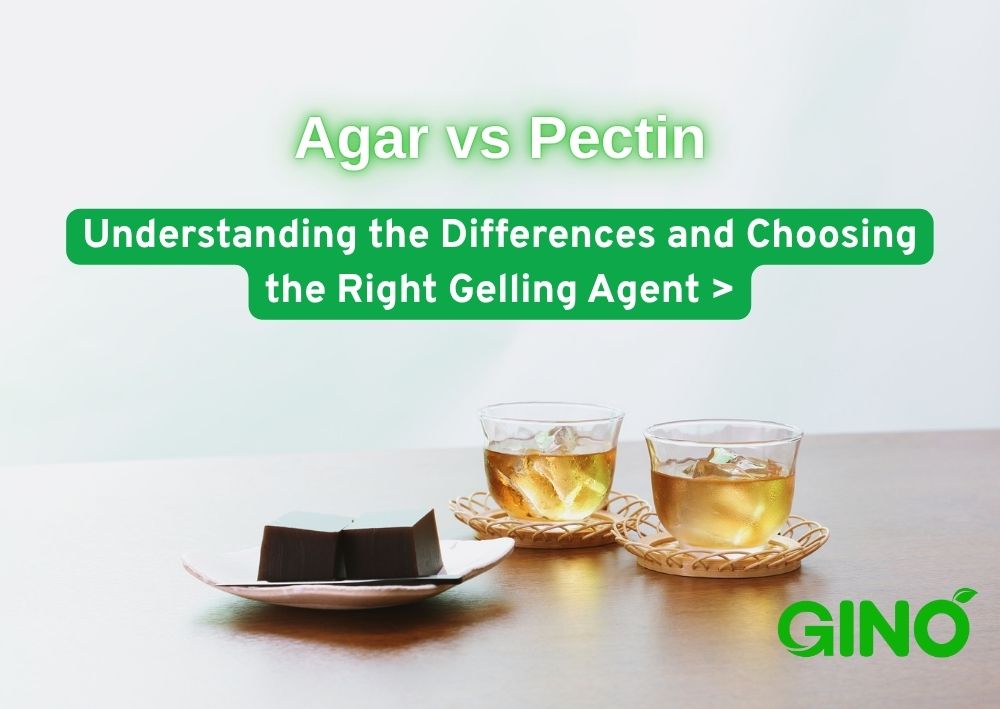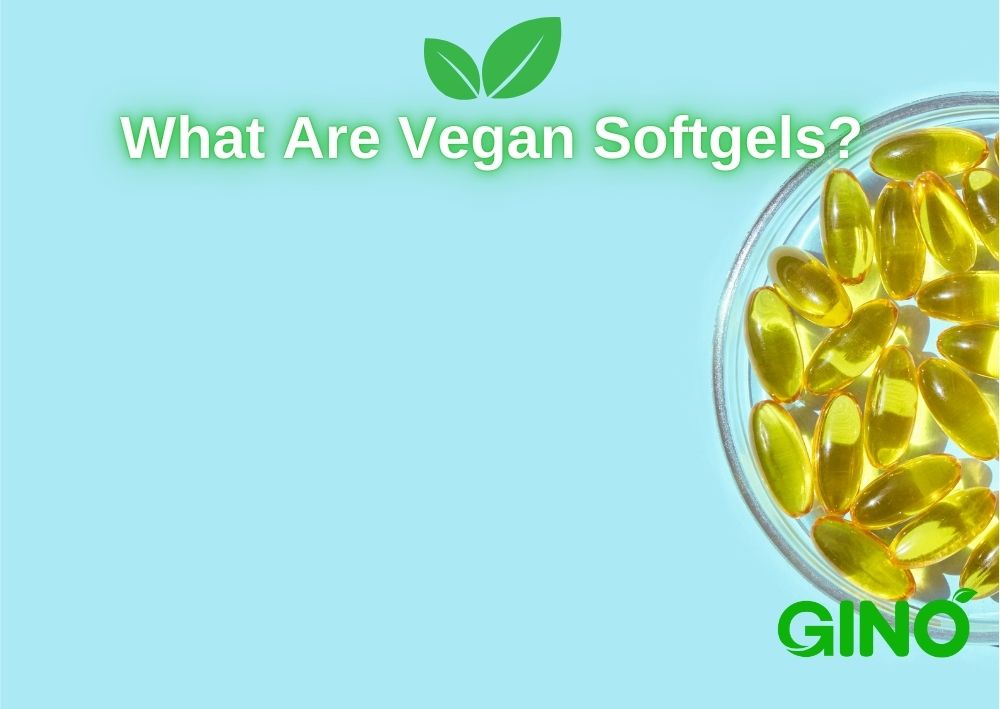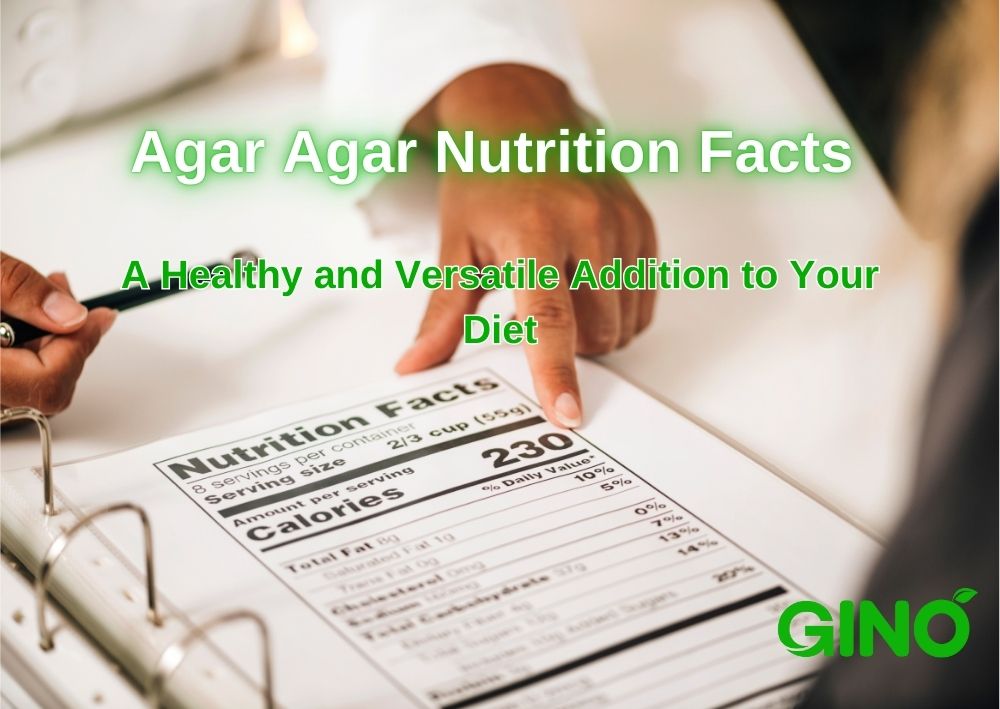Há mais de 10 anos que a Gino Biotech é um dos principais fornecedores de hidrocolóides alimentares. Com a nossa variedade de gomas e estabilizadores à base de plantas, podemos criar soluções hidrocolóides à medida, perfeitamente adaptadas às necessidades dos nossos clientes. LER MAIS
Propriedades da carragenina e efeitos sinérgicos com outras gomas
Propriedades da carragenina e efeitos sinérgicos
Facebook
Twitter
LinkedIn
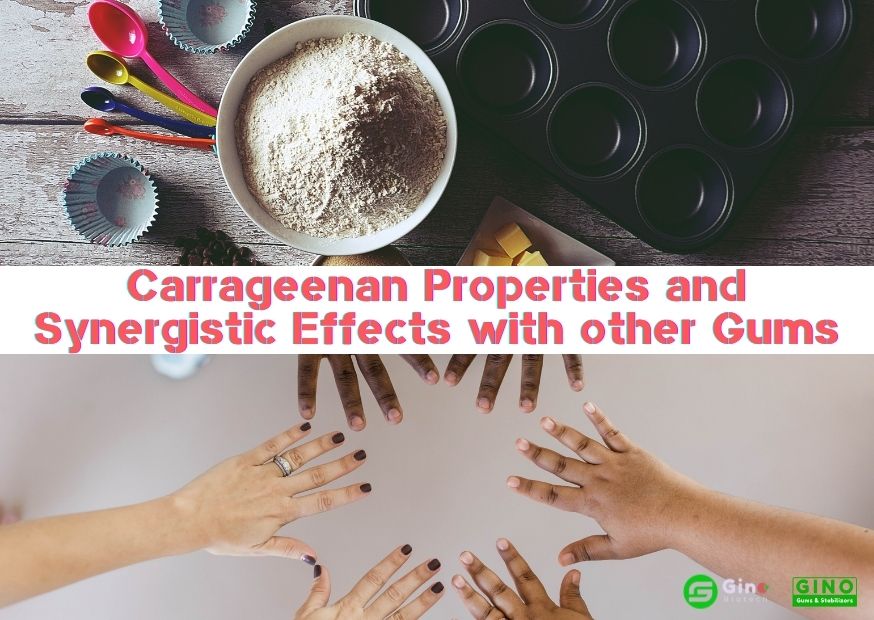
1. Definição de carragenina
A carragenina, também conhecida como musgo irlandês, é um hidrocolóide extraído de algas vermelhas como as espécies Eucheuma (kappaphycus), Chondrus, Gigartina e Hypnea.
Devido às diferentes formas de ligação dos ésteres de sulfato que contém, pode ser dividido em tipo K (Kappa), tipo I (Iota) e tipo L (Lambda). É amplamente utilizado na produção de geleia, gelado, pastelaria, doces macios, alimentos enlatados, produtos à base de carne, papas, ninho de pássaro, sopa, alimentos frios, etc.
2. Tipos de carragenina
Por exemplo,
- A Eucheuma Cottoni, que é produzida principalmente nas águas das Filipinas, contém principalmente Kappa carragenina.
- E. spinoswm das águas indonésias contém principalmente Iota carragenina.
- A Gigartina Acicularis das águas marroquinas contém principalmente carragenina Lambda.
Muitas espécies de Chondrus Crispuspus, por outro lado, contêm vários tipos de carragenina misturados.
As carrageninas de diferentes fontes de algas vermelhas têm diferentes estruturas finas e as suas propriedades coloidais são diferentes.
Mesmo para a mesma fonte, diferentes condições de extração do processo conduzem a uma degradação diferente do peso molecular e as propriedades do produto são diferentes, pelo que a carragenina é apenas uma designação geral.
As carrageninas que foram nomeadas são Kappa, Iota, Lambda, carragenina de tipo mu, n, theta, xi, etc.
No entanto
Apenas os três primeiros são produzidos principalmente a nível comercial.
3. As principais propriedades da carragenina
3. 1 Dispersão Solubilidade
Uma vez que a carragenina é um composto polissacárido solúvel em água, é difícil de dispersar em água e quanto menos solúvel for a carragenina, mais fácil será a sua dispersão.
A solução de carragenina de 7%-8% pode ser obtida por dissolução em água quente a 60-70 graus, e esta solução forma imediatamente aglomerados, que podem ser facilmente quebrados utilizando um misturador de alta velocidade. A fim de promover a dissolução da carragenina, a água quente a mais de 82 graus é geralmente utilizada para a sua dissolução e dispersão na indústria alimentar.
3. 2 Capacidade de gel
A carragenina é utilizada principalmente como agente gelificante, estabilizador e agente de retenção de água na indústria alimentar.
A força do gel, a viscosidade e outras propriedades dependem em grande medida do tipo e do peso molecular da carragenina, do pH, do sal, do álcool, dos agentes oxidantes e de outras condições da goma alimentar.
As carrageninas Kappa e Iota formam hidrogéis termicamente reversíveis na presença de catiões de gel em concentrações tão baixas como 0,5%.
A kappa carragenina forma géis na presença de iões de potássio e a dureza do gel aumenta com a concentração de iões de potássio;
Os iões de cálcio aumentam a dureza dos géis kappa e o efeito é mais significativo quando são também adicionados iões de potássio, resultando nos géis kappa mais fortes.
No entanto, a presença de iões de cálcio torna os géis de kappa-carragenina frágeis, enquanto os géis de carragenina potássica pura são elásticos, viscosos e mais transparentes.
A adição de iões de sódio à carragenina torna os géis frágeis e quebradiços, e uma grande quantidade de iões de sódio interfere com a gelificação da carragenina e reduz a força do gel.
A carragenina de lota com iões de cálcio produz a força máxima do gel, que forma um gel completamente não desidratante, elástico e muito pegajoso.
A carragenina Iota é a única carragenina estabilizada por congelamento/descongelamento.
Por conseguinte, a carragenina Iota congelada não encolhe (sem sinérese) quando derrete, ao contrário do gel de carragenina Kappa.
Em contrapartida, a carragenina Lambda não é gelificante e tem apenas o efeito de aumentar a viscosidade.
4. Sinergia entre a carragenina e outros agentes espessantes
4.1 Carragenina e gelatina
A gelatina é normalmente utilizada como agente gelificante e pode formar uma estrutura de gel mais espessa quando combinada com kappa carragenina, e a capacidade de retenção de água do sistema é melhor.
4.2 Carragenina e goma de alfarroba
Quando a proporção de goma de alfarroba e kappa carragenina é de 1: 1, o gel formado é considerado o mais palatável, no entanto, tem uma elevada resistência à fratura. Diminuir a concentração de hidrocolóides resultou numa menor resistência à fratura, mas isto teve um efeito prejudicial na sinérese do gel.
4.3 Carragenina e pectina amidada com baixo teor de metoxilação
Pectina amidada com baixo teor de metoxilação tem excelentes propriedades de retenção de água e pode levar a uma redução na quantidade de carragenina kappa, resultando na produção de géis mais macios e palatáveis. No entanto, não se registou qualquer efeito particular nas propriedades de gel das carrageninas do tipo Kappa e iota.
4.4 Carragenina e goma xantana
A adição de goma xantana resultou em géis de carragenina Kappa mais soltos, mais pegajosos e mais elásticos. Também reduz o efeito de sinérese dos géis de carragenina Kappa, mas os géis resultantes contêm bolhas de ar que afectam o seu aspeto.
4.5 Carragenina e amido modificado
O amido modificado melhora as propriedades de gel da carragenina Kappa e Iota, reduzindo o efeito de sinérese da carragenina Kappa.
5. Conclusão
A carragenina é um hidrocolóide multi-espécie com um bom efeito sinérgico com outros agentes espessantes. É amplamente utilizada em produtos lácteos e confere uma textura e um sabor únicos a diferentes produtos, tornando os produtos lácteos numa classe variada de produtos.
Relacionadas Artigos
Publicações recentes
Sobre a Gino Biotech

Somos uma empresa biotecnológica especializada na investigação, desenvolvimento e comercialização de aditivos alimentares inovadores e tecnológicos hidrocolóides Ágar-ágar, Carragenina, e Soluções de estabilizadores feitas à medida.
Com o know-how alargado e a experiência na investigação, aplicação e utilização de hidrocolóides, podemos fornecer um balcão único soluções personalizadas perfeitamente adaptados às necessidades dos nossos clientes.
O nosso produtos cobrem as necessidades dos sectores da carne, dos lacticínios, da panificação, da confeitaria e de outros sectores industriais.
Contacte o nosso representante de vendas para mais informações.




